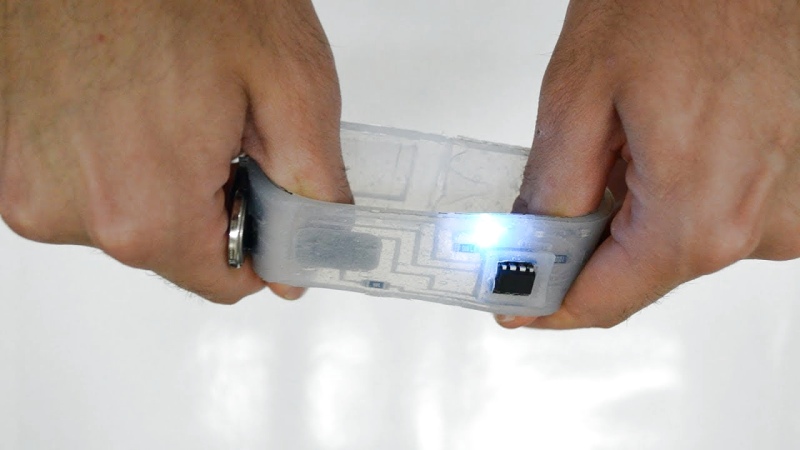Community, Leadership, Experimentation, Diversity, & Education
Pittsburgh Arts, Regional Theatre, New Work, Producing, Copyright, Labor Unions,
New Products, Coping Skills, J-O-Bs...
Theatre industry news, University & School of Drama Announcements, plus occasional course support for
Carnegie Mellon School of Drama Faculty, Staff, Students, and Alumni.
CMU School of Drama
Tuesday, January 25, 2022
Silicone Devices: DIY Stretchable Circuits
Hackaday: Flexible circuits built on polyimide film are now commonplace, you can prototype with them at multiple factories, at a cost that is almost acceptable to your average hacker. Polyimide film is pretty tough for something so thin, but eventually it will tear, and with larger components, bend radii are quite restricted. But what about stretchable circuits, as in circuits you can flex, twist and stretch?
Subscribe to:
Post Comments (Atom)

2 comments:
I do find it kind of funny that this is labeled as a Do It Yourself type thing when it mentions needing things like a CO2 Laser Cutter and Gallinstan. I understand that this is specifically referring to makerspaces but when I hear DIY I just hear the Home Depot theme song play in my head. Anyway, this seems really interesting! The article didn’t really go into any practical applications of the stretchable circuit which is a bit disappointing. I am not terribly well versed when it comes to computer or electrical engineering so the practical applications may be obvious to some out there but alas I am a layman. It does remind me a little of black mirror and Elon Musk’s new forray into techno horror with his brain chip a little bit. However, I can see a really high budget theater or movie studio using them or a close replica for costumes in a cyber punk type storyline.
I think this article is… interesting. It outlines a promising advance to allow for more versatility in how circuits can be used and maneuvered. However, it seems like the manufacturing process for a technology like this is too complicated for the average “DIY Artist” which is more or less confirmed when the articles says “if only our makerspaces didn’t have rules against laser cutting vinyl”. After reading the article a few times, I still am left with some lingering questions. I’m confused as to wear the power would come from for these circuits; an outside power source, something built into it, or something else? I am going to make the assumption that the research is still in the early stages of development, but as stated in the beginning of the article, if this idea can be mastered it could offer a reliable and more versatile replacement for the standard before which was polyimide film.
Post a Comment